The history of Sarah Island is brutal. Other words that come to mind? Horrific. Torturous. Unimaginable. Its residents had another description: Hell on Earth.
As the passengers file off the boat and walk down the jetty, I can’t help but compare our arrival to that of those many years before us.
I have arrived in comfort – leaving the warm cabin of the catamaran after cruising along the majestic Gordon River. Not quite 200 years ago, few people would have come here by choice.
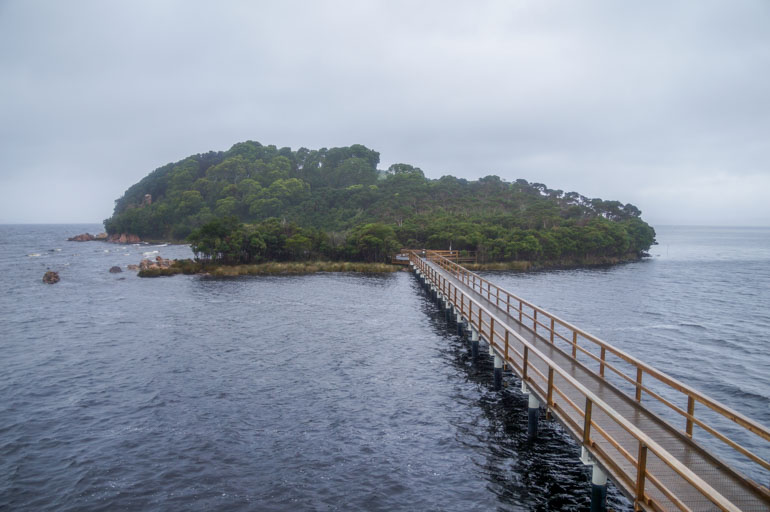
The Macquarie Harbour Penal Station opened on Sarah Island in 1822. Surrounded by the treacherous seas and harsh, unmapped wilderness of Tasmania’s West Coast, the island was considered the ideal setting for a convict settlement to house the worst of the worst.
The settlement closed in 1833, ending a particularly dark chapter of Tasmania’s history. Now, it’s a surprisingly serene place to visit.
Time and weather has destroyed most of the infrastructure, but some moss-covered ruins of cottages and other buildings remain among lush grass and tall, bright green ferns. Our guide, Ingrid, doubts Sarah Island is haunted and she earns my admiration when she says she’s spent a night on the island.
Despite the beautiful setting, I spend every second thinking of ghosts and nightmares and counting down until I can leave.
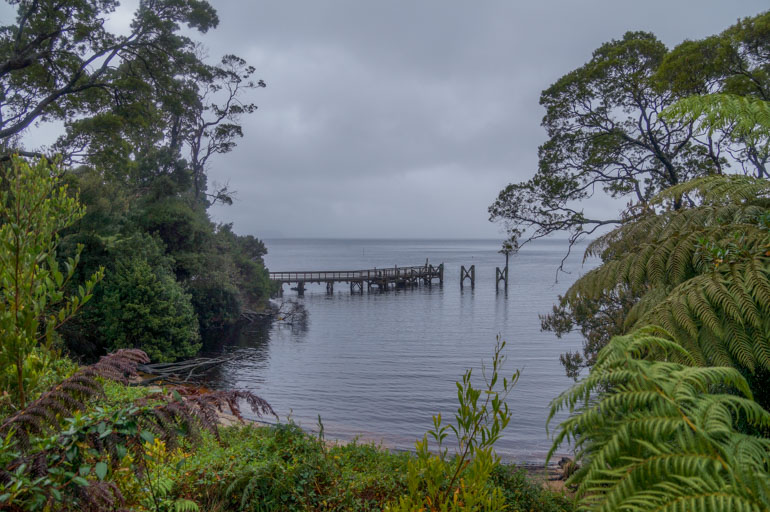
The beginning
In the early 1800s, more than 70,000 convicts were transported from Britain to Tasmania – then known as Van Diemens Land. Sarah Island was established to isolate dangerous criminals, but also so the government could capitalise on the abundance of Huon pine growing on the banks of the Macquarie Harbour and the Gordon River. The convicts formed work parties to harvest the valuable timber, which was initially transported to Hobart. When that didn’t go to plan (the rough seas along Tasmania’s south coast were more than challenging) a shipyard was built on the island. It became the largest shipbuilding operation in the southern hemisphere at that time and the convicts produced more than 100 vessels.
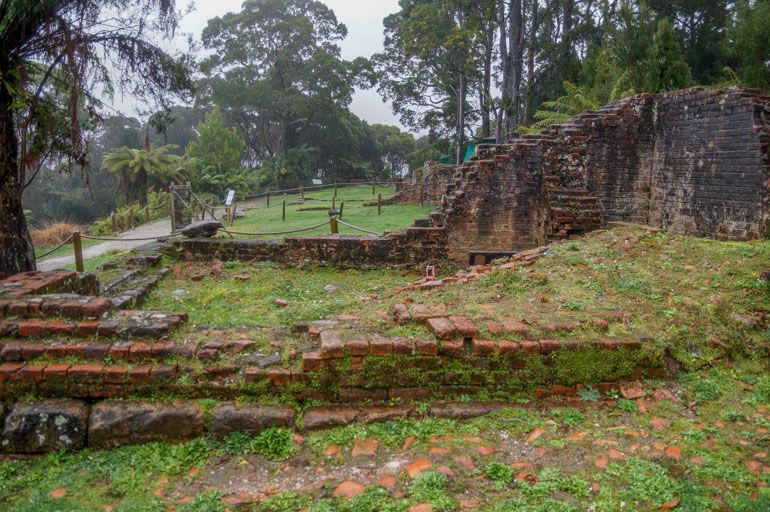
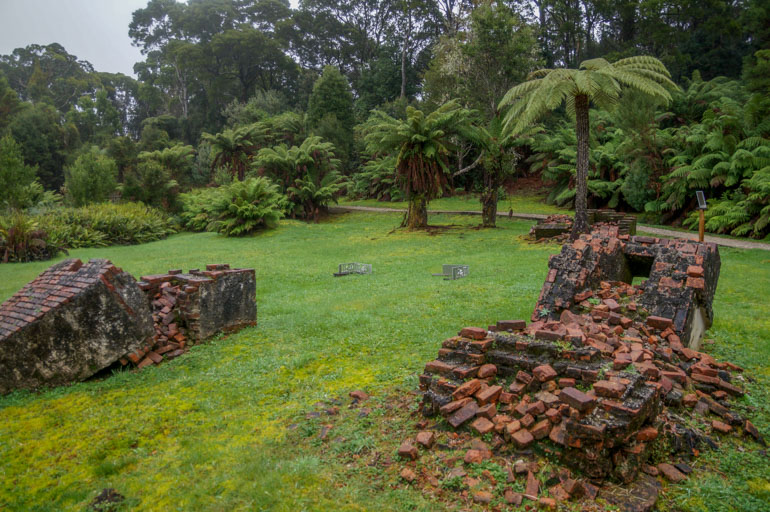
By 1827 the island housed almost 400 convicts and its location meant the settlement had to be almost entirely self-sufficient. The only way of reaching the island was by ship. Macquarie Harbour was discovered in 1815 on an expedition nine days after it left Hobart, but the perilous seas meant the journey often took longer than that.
Remains of some of the infrastructure, which included two quarries, a tannery, lumber yard, shoemaker, bakehouse, penitentiary and wharves, are still visible. We walk past the brick remnants of the buildings once occupied by the Commandant, chaplain and militarily officer as Ingrid shares the story behind what we’re seeing. She points out the ruins of the solitary confinement chambers, but the sight of them is nothing compared to the scenes my imagination conjures on hearing what life was like here.
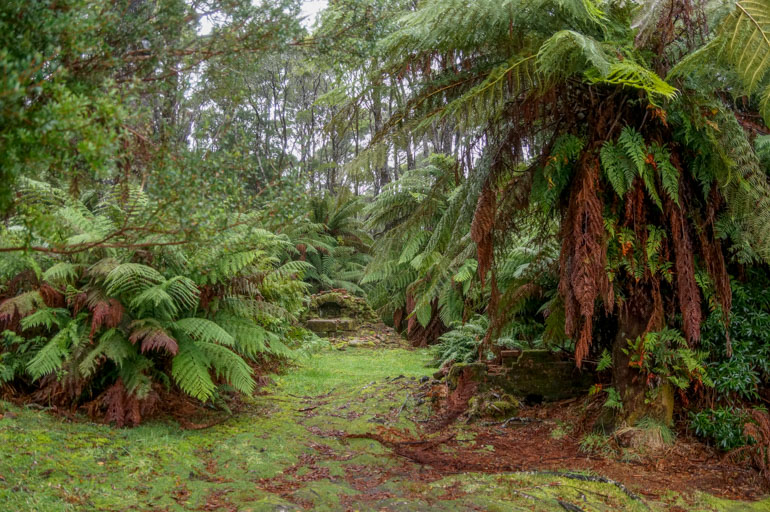
The horror
There’s no way of softening the horrors that occurred on Sarah Island and Ingrid doesn’t try. We’ve only been here a few minutes when she launches into the story of the harsh conditions and even harsher punishments, delivered with the Macquarie Cat – the settlement’s gruesome cat-o-nine tails “guaranteed to rip your skin wide open on the very first lash”.
“The convicts were assembled here every morning and afternoon for roll call, check none of you had escaped, and the Commandant would stand here on this sandstone pulpit and issue those punishments,” Ingrid tells us, as we stand in the footsteps of those convicts.
“Barely a day went by when there wasn’t at least one poor soul tied up to the triangle, getting lashed.
“You weren’t lashed by a military officer or a person in authority, you were lashed by a fellow convict. And if your convict didn’t want to lash you, then he’d be getting lashed as well, by one of his mates.
“So this was a brutal and miserable place, make no mistake.”
Information from the Tasmanian Parks and Wildlife Service says that in the first seven years on Sarah Island an average of 6560 lashes per year were inflicted on 175 men. There’s really no way to hear those figures without feeling a little bit sick inside.
Tobacco, rum, sugar and even tea was considered contraband. The work was hard, food was scarce and the living conditions abhorrent. Prisoners went as far as committing serious crimes on the island so they would be transported back to Hobart – even if that meant a fate of execution. Anything to escape.
“Back in those early days, suicide pacts were common,” Ingrid says. “Sad, but true.”
The escapes
Sarah Island was a place of nightmares, but also legends. The characters of Sarah Island and their antics provide some lighter moments as Ingrid brings them to life while we walk around the ruins. The tales of escapes – some successful, most not – are inspiring, heartbreaking and almost unbelievable. The story of Alexander Pearce is the latter.
Pearce was an Irish convict who escaped Sarah Island twice and confessed to eating his fellow escapees. His initial confessions of cannablism, made when he was caught the first time, were dismissed. The human body parts found in his pockets when he was captured after his second escape proved his story.
Pearce was executed in 1824 – a gruesome end for a man who was sent to Australia for stealing six pairs of shoes.
James Goodwin also managed a semi-successful escape. Goodwin and another convict, Thomas Connolly, fled a work party along the Gordon River and traversed the South West Wilderness. Both were recaptured, but Goodwin was pardoned thanks to his unique knowledge of the escape route, which travelled through previously unmapped areas.
“So instead of sending him back to Sarah Island they sent him to the surveyors general department where he made beautiful maps and charts, which are in the archives in Hobart today,” Ingrid tells her captivated audience.
Unfortunately, Goodwin was later caught stealing and shipped off to Norfolk Island.
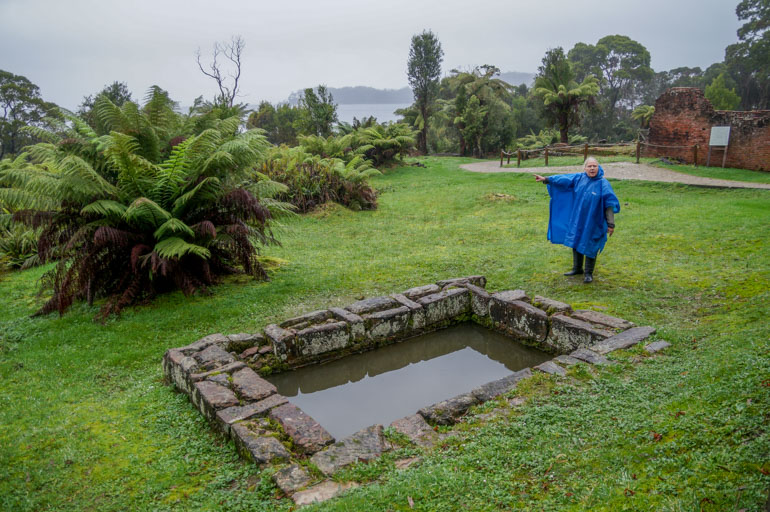
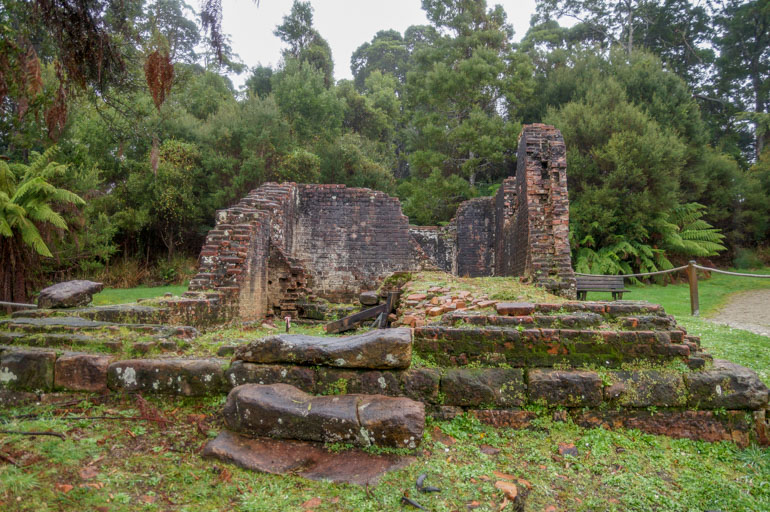
Visiting
As early as 1899, charters were bringing people to Sarah Island following the settlement’s closure in 1833. Despite its hellish history, it is still a remarkably beautiful spot – even if you can’t escape the usual rainy West Coast weather. It was declared a historic site in 1971 and is now part of the UNESCO-listed Tasmanian World Heritage Area. Our tour explored about a third of the island, but there are walking trails and signs to follow if you have time to see more.
Australia’s convict history isn’t pretty, but it’s as fascinating as it is disturbing. The story of Sarah Island is particularly captivating. How the prisoners on the island coped in the face of such conditions astounds me and there is so much more to learn about this place – I’ve only shared a fraction with you here. Hearing such gruesome tales isn’t going to be everybody’s cup of tea, but this is an unforgettable history lesson.
Sarah Island can be visited from Strahan, on Tasmania’s West Coast. Strahan is a 2.5-hour drive from Burnie, or a 4-hour drive from Hobart.
I visited Sarah Island with Gordon River Cruises. The 5.5 hour cruise included a one-hour guided tour on Sarah Island. I got a 15 per cent discount on my premium seat (usually $130 including lunch) because I was staying at Strahan Village.
World Heritage Cruises offers similar tours, including lunch and a guided tour on Sarah Island. Cruise times and ticket prices vary through out the year – it’s best to check the website.


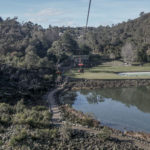
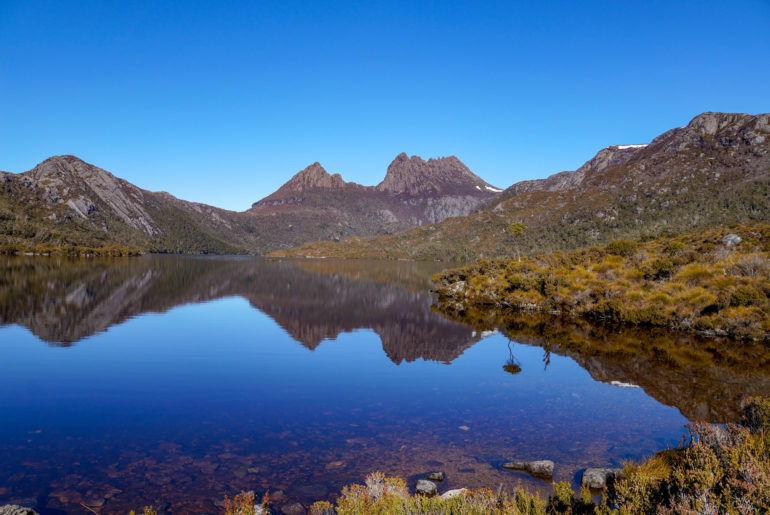
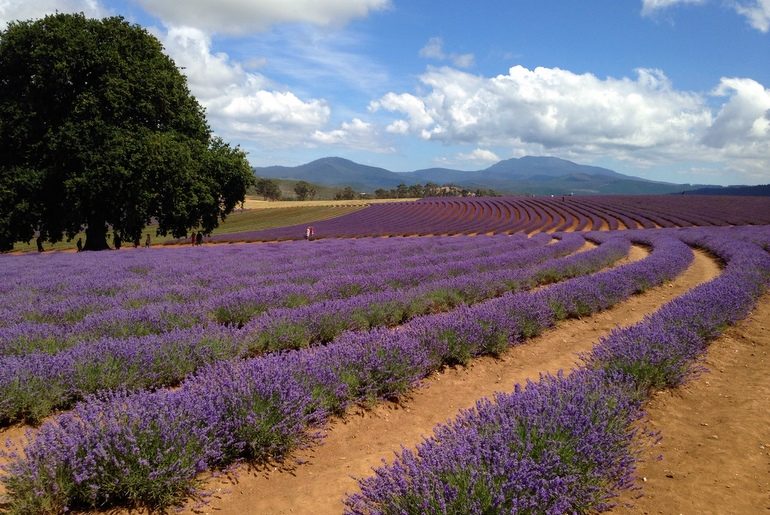
3 Comments
I have never even heard of this Island before, what a fascinating, if heartbreaking story. Thanks for sharing.
Thanks Malinda. There’s a lot of convict history in Tasmania. None of it is very pleasant to learn about though.
Great Blog Pegs,
really brought the atmosphere to life!
thanks for sharing.
x